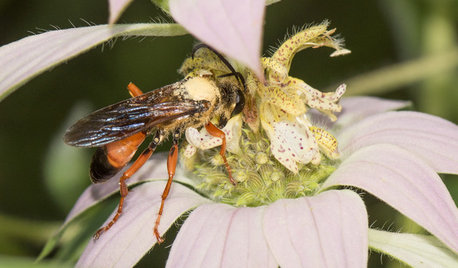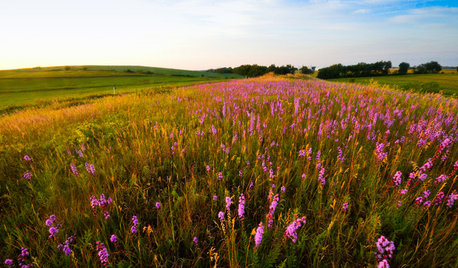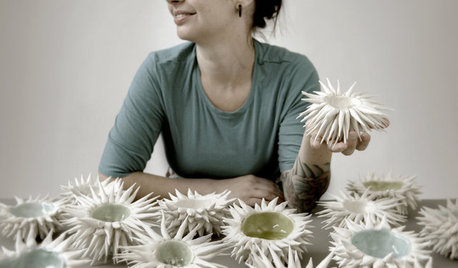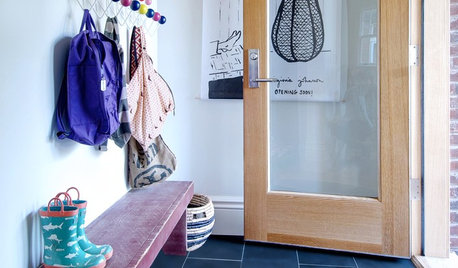On clay and wasps: Help! In need of advice!
Panoply76
10 years ago
Related Stories

GARDENING GUIDESGreat Golden Digger Wasp: A Beneficial Flower-Visiting Insect
Introducing the great golden digger wasp, a colorful pollinator that also hunts foliage-eating insects
Full Story
FLOWERS AND PLANTSHelp Monarchs and Other Butterflies by Planting Common Milkweed
Summer-blooming Asclepias syriaca is an important larval host plant for the monarch butterfly and attracts a number of pollinating insects
Full Story
GARDENING GUIDESHelp Fuel the Monarch Migration With These 6 Prairie Plants
Try these nectar-rich beauties and help autumn monarchs
Full Story
GARDENING GUIDESHow to Stop Worrying and Start Loving Clay Soil
Clay has many more benefits than you might imagine
Full Story
TASTEMAKERSInterview: Heather Knight of Element Clay Studio
Nature, architecture and a creative community inspire an Asheville artist
Full Story
PETS6 Ways to Help Your Dog and Landscape Play Nicely Together
Keep your prized plantings intact and your dog happy too, with this wisdom from an expert gardener and dog guardian
Full Story
KITCHEN DESIGNKey Measurements to Help You Design Your Kitchen
Get the ideal kitchen setup by understanding spatial relationships, building dimensions and work zones
Full Story
LANDSCAPE DESIGNHow to Help Your Home Fit Into the Landscape
Use color, texture and shape to create a smooth transition from home to garden
Full Story
FALL GARDENINGMake This Fall’s Garden the Best Ever
Learn the most important tip for preventing buyer’s remorse, plus get more valuable buying and planting advice
Full Story
LIFEYou Said It: ‘We’re Here to Stay’ and Other Houzz Quotables
Design advice, inspiration and observations that struck a chord this week
Full StorySponsored
Columbus Design-Build, Kitchen & Bath Remodeling, Historic Renovations
More Discussions







docmom_gw
bananasinohio
Related Professionals
Quincy Landscape Architects & Landscape Designers · Sand Springs Landscape Architects & Landscape Designers · Brandon Landscape Contractors · Deerfield Beach Landscape Contractors · Mount Sinai Landscape Contractors · Nanuet Landscape Contractors · North Chicago Landscape Contractors · Branford Fence Contractors · Castro Valley Fence Contractors · Long Beach Fence Contractors · Mays Chapel Fence Contractors · Reisterstown Fence Contractors · Sacramento Fence Contractors · Turlock Fence Contractors · Alexandria Window ContractorsPanoply76Original Author
spaceman13
Panoply76Original Author
Leafhead
bananasinohio
Leafhead